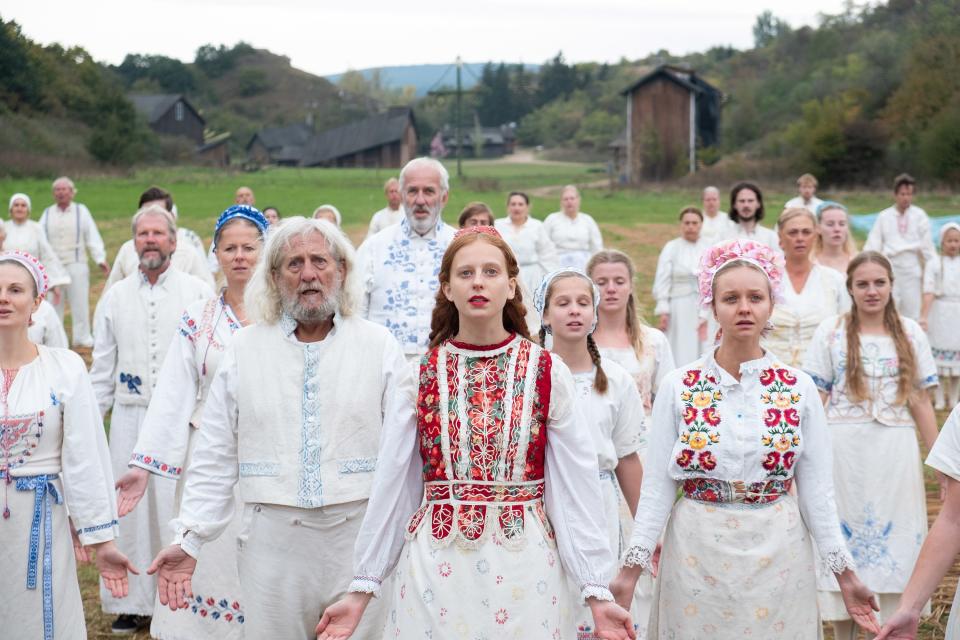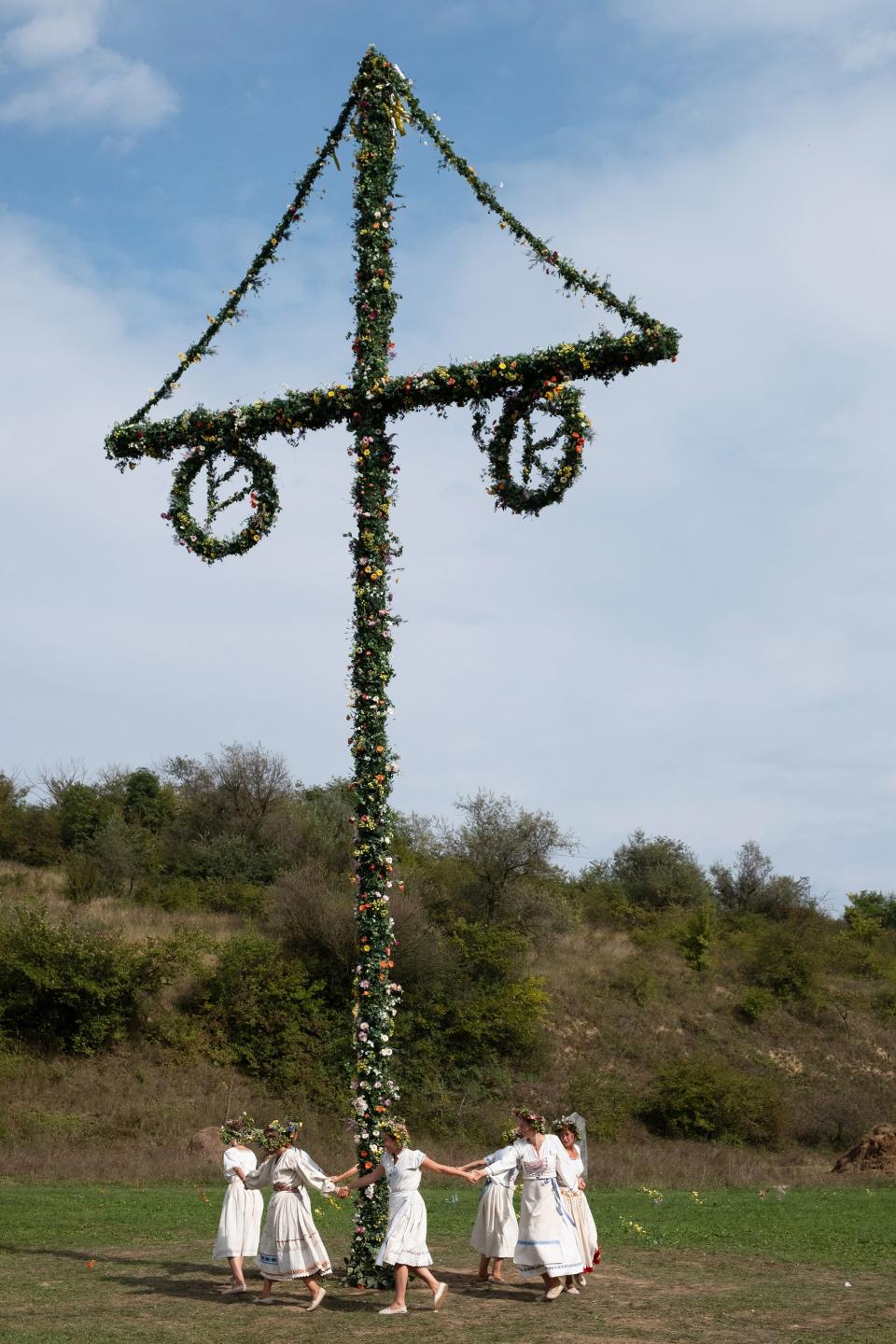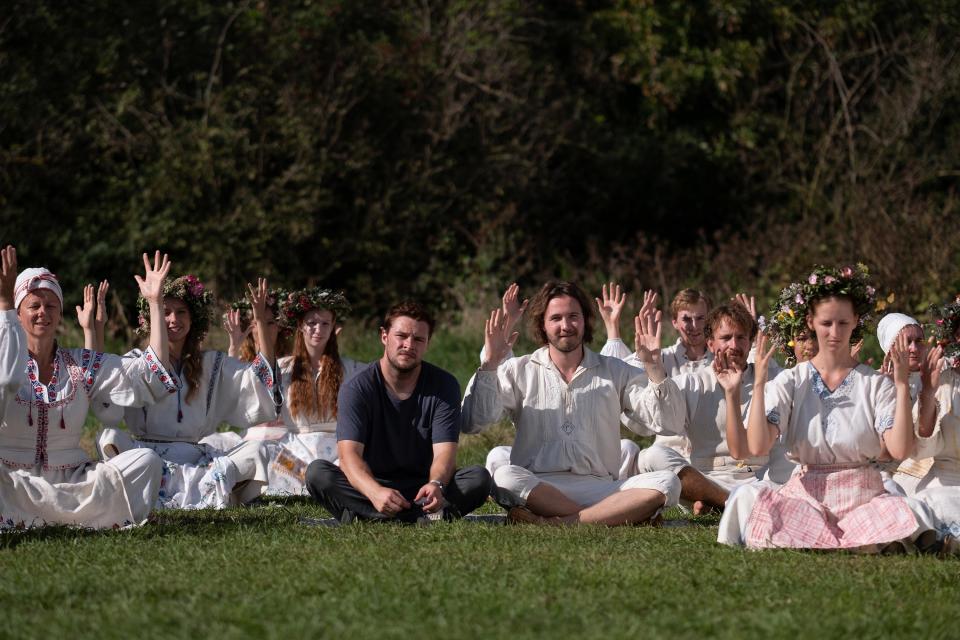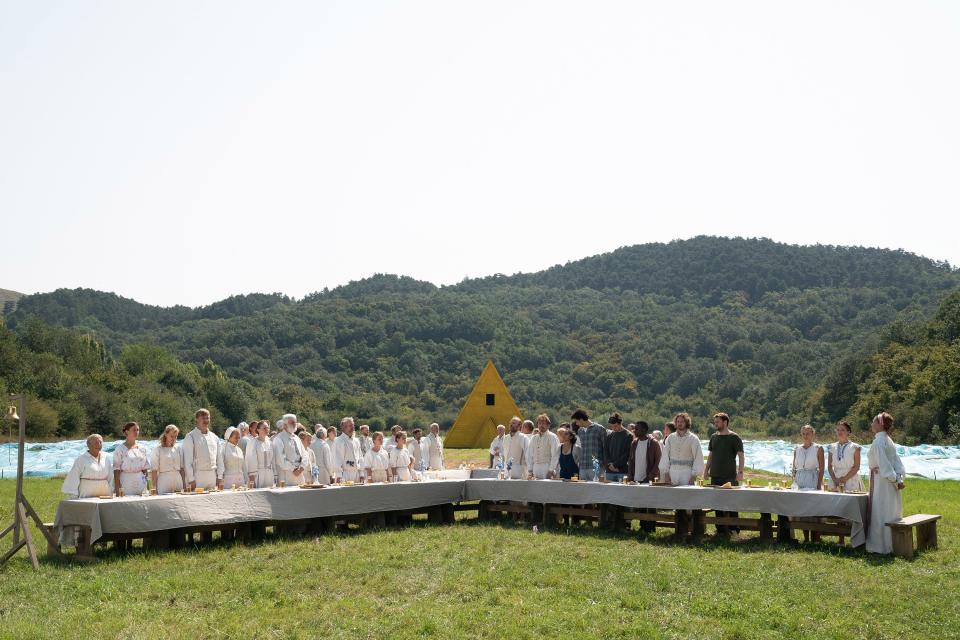Why Midsommar Will Make You Want to Dress Like You’re In a Swedish Cult This Summer
Midsommar Costumes






These days the main scare tactic in many horror films, or horror-adjacent television shows, is how in touch they are with reality. The Handmaid’s Tale is terrifying because right now, during this U.S. presidency, a form of the Gilead regime could plausibly rise up. Get Out made us uneasy because it brought to the surface the very real and still excruciatingly present ideologies of racism in America. Ari Aster’s new film Midsommar, named for the traditional Swedish holiday that marks the summer solstice in June, is a far cry from these examples in terms of symbolizing deeply rooted sociological issues, but in a way, with no deeper meaning or supernatural beings lingering in the plotline, it could, theoretically, happen to us. In recent history, festivals have proven to be epic magnets with which a group, company, or person can lure financially inept 20- and 30-somethings to a gathering under false pretenses, but just think: Instead of hoping to ride a jet ski with Bella Hadid while Blink-182 serenades you from the shores of an island, you’re hoping to go on the most blissful psychedelic trip of your life in the middle of an idyllic Swedish field. Truth be told, the former sounds more far-fetched than the latter.
The latter, though, is the starting point for Midsommar. Four grad-school dudes decide to travel to a remote part of Sweden and visit the commune where one of them grew up. He has promised near-24-hour sunshine, a serene setting, beautiful ladies, and shrooms, lots of shrooms. One of the dudes is named Christian, and he dates Dani, played by a brilliant Florence Pugh. Dani and Christian have been on the rocks for months, but once a horrific tragedy enters Dani’s life, her already intense anxiety goes through the roof, and Christian, who was planning to break up with her just before the trip, reluctantly comes to her rescue. Long story short, Dani invites herself on the guys’ trip, they go, and the tripping ensues immediately. They eventually come down for a while, but what follows is a creepy, funny, uneasy adventure into death-cult territory, replete with disturbing ceremonies and one very uncomfortable sex scene. But, as Aster has said in interviews ahead of the film’s premiere today, Midsommar is really a breakup flick at its core. The director had just severed ties with his longtime girlfriend and thus channeled his emotions, however oddly, into a bright, 140-minute spiral into a countryside nightmare. Different people, different coping mechanisms.
The breakup, coupled with the fact that, at first glance, this “commune” seems so lovely, so joyful, is what gives the film its scare factor. The realness is there, even if it’s masked by freaky, made-up Scandi folklore. It’s also in the costumes, because the clothes that the creepy members of this community wear on camera are more beautiful than both the way that Midsommar is filmed and its bucolic landscape. In a nutshell: They’re so good, it’s scary. The crisp white embroidered cotton frocks on both the women and the men are based on classic Swedish Midsommar costume, but, much like the prairie and Amish dress trends that are still going strong among fashion fanatics, the history-laden nostalgia feels totally relevant in 2019. It’s easy to imagine a fan of, say, Dôen, Batsheva, or Brock Collection prancing around L.A. or New York City wearing a grosgrain-detailed corset and a linen top with crochet detailing at the sleeve. It’s possible this movie could inspire a new, IRL cult of celebratory Midsommar aesthetic devotees.
Even more appealing is knowing that all of the clothing in the film was embroidered by hand and some was hand-painted as well. Many pieces were made with 100-year old linen from Germany and Hungary. As the film’s costume designer, Andrea Flesch, explained last week from her home in Budapest, “The idea was to really recreate a traditional Swedish community and their manner of dress.” She adds, “Ari really wanted to keep the old silhouettes and cuts, but we did play with color a bit.” Color was important in Midsommar, especially when it came to the costumes. “When you first see the members of the commune, everyone is wearing white,” she notes. “Then you’ll notice that the clothes become more colorful, and each age group has their own colors, like gold and blue for the elders. Also, sex is a mixed thing, as there are no mothers and fathers to one child, no one man for one woman or vice versa; so many of the men wear skirts.” On the outside, the community is welcoming and unbound by age or gender, but looking more closely at the detailing on the garments, the divisions of this eerie little society become much more visible. In the real world too, our clothes can often be pegged, however unfairly, to specific genders or socioeconomic standing.
In fact, there is more symbolism in Flesch’s costume designs than there is in the entire rest of Midsommar, which makes the clothes even more delightful to watch and pick apart on screen. And again, off-screen, they’re also clothes that would make plenty of sense in the real world, what with their dainty florals, flowing frock skirts, and billowing sleeves. If you take anything away from Midsommar, other than the fact that festival hype and flower crowns are evil, let it be this: When it comes to dressing like a member of a cult in a twisted Swedish fairytale, there’s really nothing to be afraid of.

Originally Appeared on Vogue

